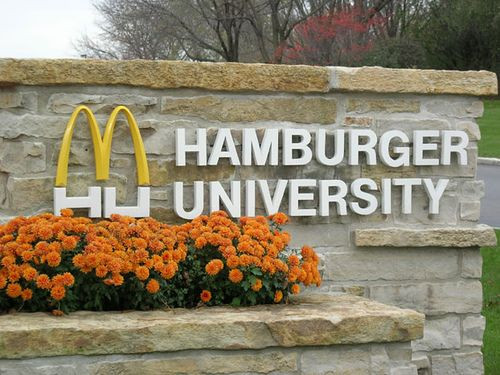Immigrant Doctors Working In Fast-Food Restaurants To Pay For Licenses: Obamacare Adds Millions To Health System, Despite Doctor Shortage

In what are often last-ditch efforts to stay afloat, immigrant doctors have begun taking menial odd jobs, such as landscaping, asbestos removal, and floor installation, in order to finance the medical board exam that would let them practice medicine in the U.S.
The problem that immigrant doctors are facing is something of a paradox. Under Obamacare, 25 to 30 million new people will be added to the health care system, creating added pressure on the already limited number of primary care physicians. But because of the high costs of preparing for and financing medical board exams, many foreign doctors cannot practice — at a time when Americans need them the most.
The difficulties in obtaining a medical license have hamstrung Latino immigrants more than perhaps any other demographic. In Southern California especially, some 3,000 medically trained physicians must work low-paying jobs, often manual labor, in hopes of someday transitioning back into a hospital.
Landor Sanchez currently works in asbestos removal in upstate New York, though, in his home country of Cuba, he worked as a family medicine doctor for five years, according to CNN.
In 2011, Sanchez moved to the United States with the hope of continuing his practice. However, when the funds ran out in preparing for licensing exams, Sanchez turned to less qualified positions. He has since worked in painting, fast food restaurants, and now, asbestos removal.
These challenges are not new, necessarily. The costs of becoming a licensed physician have not risen dramatically in recent years. What has changed, however, is the supply of licensed doctors as well as the demand for them.
The Patient Protection and Affordable Care Act, known more commonly as Obamacare, which President Barack Obama signed into law in 2010, will insure 25 million more Americans beginning in 2014. Meanwhile, many states currently suffer from doctor shortages, which leave doctors like Landor Sanchez, and many more, spinning their wheels while more Americans need their help.
Help Arrives on the West Coast
The University of California Los Angeles has developed a program to combat this trend. It's called the International Medical Graduate Program (IMG), and it helps cover the costs for fast-track Latino doctors to take their exams and enter into the U.S. health care system.
"We had always wondered, where are the (immigrant) doctors from Latin America?" said Dr. Patrick Dowling, chairman of UCLA's Department of Family Medicine. "And we stumbled upon them working in menial jobs."
One woman who Dowling came across was working at a McDonald's in Colorado, a great irony he noted.
"She is selling fast food to people," he said, "And if she were licensed as a physician, she could be educating those same people, those same patients, on what a good diet is."
Dowling, believing Latino immigrants face the greatest challenges in entering America's health care profession, teamed up with his colleague, Dr. Michelle Bholat, to develop the IMG program. It provides test prep classes, clinical observations with UCLA doctors, and covers the cost of its students' medical board exam with a monthly stipend.
Since beginning the IMG program in 2006, UCLA has graduated 54 bilingual, bicultural graduates, placing them into 15 different family medicine training programs in California. Graduates must work under the condition that they will practice in an underserved area for three years, as a way to chip away at the area's poverty.
Getting a Life Back
For many, the program has acted as a lifeline. "I would do anything you asked me to as long as it was legal and you paid me for it," said Dr. Jose Chavez, who would attend night classes after working grueling hours in the day. "Imagine you are working 10 hours a day, and then try to study 10 hours at night. It is really impossible."
After six months, Chavez passed the medical exam. He was able to devote more time to studying after quitting his house cleaning job, due to the stipend cushioning his expenses.
"I personally know at least 20 more (Latino immigrant) doctors who are delivering pizza, and instead they could be working as doctors if they had the help I had," said Chavez, who is currently a first-year resident at Riverside County Regional Medical Center in California.
According to the hospital, the ratio of primary care physicians to patients is 9,000 to one.
Dowling and Bholat say that while their fast-track program may make only a small dent to help the primary care shortage in America, it's a critical start.
For now, Landor Sanchez will remain in the asbestos removal industry, although he has already applied to the IMG program. He says no matter what it takes, he won't give up on his dream to practice medicine in the United States.
"We're getting dozens of applications daily, and we accept as many candidates as we can financially support in the program," said Bholat. "We need these doctors in America."



























